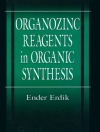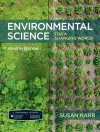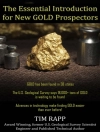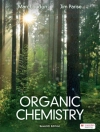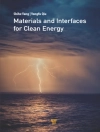In the past few decades, the increasingly routine use of advanced structural probes for studying the structure and dynamics of the solid state has led to some dramatic developments in the field of porous solids. These materials are fundamental in a diverse range of applications, such as shape-selective catalysts for energy-efficient organic transformations, new media for pollutant removal, and gas storage materials for energy technologies. Porosity in inorganic materials may range from the nano-scale to the macro-scale, and the drive towards particular properties remains the goal in this fast-developing area of research. Covering some of the key families of inorganic solids that are currently being studied, Porous Materials discusses:
- Metal Organic Frameworks Materials
- Mesoporous Silicates
- Ordered Porous Crystalline Transition Metal Oxides
- Recent Developments in Templated Porous Carbon Materials
- Synthetic Silicate Zeolites: Diverse Materials Accessible Through Geoinspiration
Additional volumes in the Inorganic Materials Series:
Low-Dimensional Solids | Molecular Materials | Functional Oxides | Energy Materials
表中的内容
Inorganic Materials Series Preface ix
Preface xi
List of Contributors xiii
1 Metal-Organic Framework Materials 1
Cameron J. Kepert
1.1 Introduction 1
1.2 Porosity 3
1.2.1 Framework Structures and Properties 3
1.2.2 Storage and Release 18
1.2.3 Selective Guest Adsorption and Separation 21
1.2.4 Heterogeneous Catalysis 27
1.3 Incorporation of Other Properties 31
1.3.1 Magnetic Ordering 32
1.3.2 Electronic and Optical Properties 41
1.3.3 Structural and Mechanical Properties 51
1.4 Concluding Remarks 54
Acknowledgements 56
References 56
2 Mesoporous Silicates 69
Karen J. Edler
2.1 Introduction 69
2.2 Nomenclature 70
2.3 Methods of Preparation 71
2.4 Surfactant Aggregation 72
2.5 Silica Source 75
2.6 Template Removal 79
2.7 Synthetic Routes and Formation Mechanisms 83
2.7.1 True Liquid Crystal Templating 83
2.7.2 Cooperative Self-Assembly 87
2.7.3 Evaporation-Induced Self-Assembly 99
2.8 Properties and Characterisation 108
2.9 Macroscopic Structures 117
2.10 Applications 124
References 128
3 Ordered Porous Crystalline Transition Metal Oxides 147
Masahiro Sadakane and Wataru Ueda
3.1 Introduction 147
3.2 Scope and Limitations of this Review 148
3.3 Microporous Transition Metal Oxide Materials 149
3.4 Mesoporous Transition Metal Oxide Materials 153
3.4.1 Soft Template Method 154
3.4.2 Hard Template Method 155
3.4.3 Mesoporous Oxides of Group 4 Elements (Ti, Zr) 157
3.4.4 Mesoporous Oxidesof Group5Elements (Nb, Ta) 170
3.4.5 Mesoporous Oxides of Group 6 Elements (Cr, Mo, W) 172
3.4.6 Mesoporous Oxides of Group 7 Elements (Mn) 172
3.4.7 Mesoporous Oxides of Elements of Groups 8–11 (Fe, Co, Ni, Cu) 173
3.4.8 Mesoporous Oxides of Lanthanide Elements (Ce) 174
3.5 Macroporous Materials 174
3.5.1 Macroporous Monometal Oxides 177
3.5.2 Macroporous Oxidesof Group4Elements (Ti, Zr) 191
3.5.3 Macroporous Oxidesof Group5Elements(V, Nb) 191
3.5.4 Macroporous Oxidesof Group6Elements(Cr, W) 192
3.5.5 Macroporous Oxides of Elements of Groups 7–11 (Mn, Fe, Co, Ni, Cu) 193
3.5.6 Macroporous Oxides of Lanthanide Elements (La, Ce, Nd, Sm, Eu) 194
3.5.7 Macroporous Multi-Component Metal Oxides 194
3.5.8 Two-Step Templating Method 207
3.5.9 Applications 207
3.6 Conclusion 209
References 209
4 Templated Porous Carbon Materials: Recent Developments 217
Yongde Xia, Zhuxian Yang and Robert Mokaya
4.1 Introduction 217
4.2 Microporous Carbon Materials 221
4.2.1 Zeolites as Hard Template 221
4.2.2 Clays as Hard Template 229
4.2.3 Other Microporous Materials as Hard Template 231
4.3 Mesoporous Carbon Materials 231
4.3.1 Conventional Hard Template Synthesis Strategy 232
4.3.2 Cost-Effective Strategies for the Synthesis of Mesoporous Carbons 240
4.3.3 Soft-Template Synthesis Strategy for Ordered Mesoporous Carbons 241
4.3.4 Ordered Mesoporous Carbons with Graphitic Pore Wall 244
4.3.5 Mesopore Size Control 246
4.3.6 Morphology Control 247
4.4 Macroporous Carbon Materials 252
4.4.1 Silica Colloidal Crystals as Hard Template 252
4.4.2 Polymer Microspheres as Template 254
4.4.3 Dual Template Method 255
References 258
5 Synthetic Silicate Zeolites: Diverse Materials Accessible Through Geoinspiration 265
Miguel A. Camblor and Suk Bong Hong
5.1 Introduction 265
5.2 Zeolites: Some Definitions 267
5.3 Zeolite Structures 269
5.4 Chemical Composition of Silicate Zeolites 270
5.4.1 Naming Zeolites 272
5.4.2 Loewenstein’s Rule 273
5.5 Zeolite Properties 274
5.6 Zeolite Applications 275
5.7 Zeolite Synthesis 279
5.7.1 The Synthetic Zeolites as Geoinspired Materials 279
5.7.2 Thermochemistry of Zeolite Synthesis 281
5.7.3 Organic Structure-Directing Agents 284
5.7.4 Structure-Direction by Flexible, Hydrophilic OSDAs 289
5.7.5 Double OSDA Strategies 295
5.7.6 Structure-Direction by T-Atoms 297
5.7.7 Zeolite Synthesis from Nonaqueous Solvents 307
5.7.8 The Fluoride Route to Zeolites 308
5.7.9 Structure-Direction Issues in the Fluoride Route to Pure-Silica Zeolites 312
5.7.10 Topotactic Condensation of Layered Silicates 315
5.8 Concluding Remarks 316
Acknowledgements 316
References 317
Index 327
关于作者
PROFESSOR DUNCAN BRUCE graduated from the University of Liverpool (UK), where he also gained his Ph D. In 1984, he took up a Temporary Lectureship in Inorganic Chemistry at the University of Sheffield and was awarded a Royal Society Warren Research Fellowship. He was then appointed Lecturer in Chemistry and was promoted Senior Lecturer in 1994, in which year he became co-director of the Sheffield Centre for Molecular Materials. In 1995, he was appointed Professor of Inorganic Chemistry at the University of Exeter. Following the closure of Exeter’s chemistry department in 2005, Professor Bruce took up his present position as Professor of Materials Chemistry in York. He is currently Chair of the Royal Society of Chemistry Materials Chemistry Forum. His current research interests include liquid crystals and nanoparticle-doped, nanostructured, mesoporous silicates. His work has been recognized by various awards including the British Liquid Crystal Society’s first Young Scientist prize and the RSC’s Sir Edward Frankland Fellowship and Corday-Morgan Medal and Prize. He has held visiting positions in Australia, France, Japan and Italy.
DR. RICHARD WALTON, who was also formerly based in the Department of Chemistry at the University of Exeter, now works in the Department of Chemistry at the University of Warwick. His research group works in the area of solid-state materials chemistry and has a number of projects focusing upon the synthesis, structural characterization and properties of inorganic materials.
DERMOT O’HARE is Professor in the Chemistry Research Laboratory at the University of Oxford. is research group has a wide range of research interests. They all involve synthetic chemistry ranging from organometallic chemistry to the synthesis of new microporous solids. Duncan Bruce and Dermot O’Hare have edited several editions of Inorganic Materials published by John Wiley & Sons Ltd.


